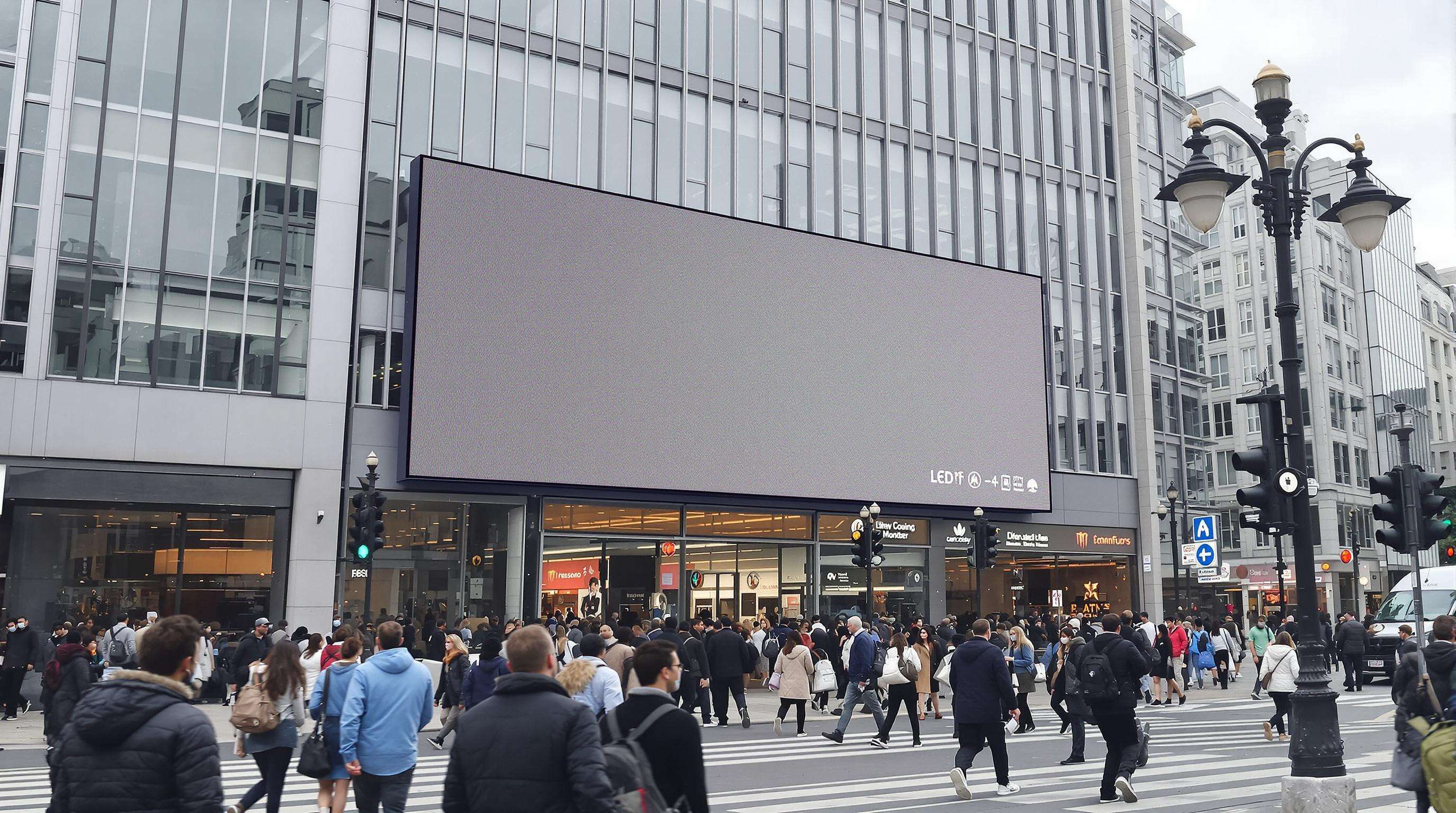AI imegeuza panel za LED za kuthibitisha kuwa ni mazingira ya kujibu ambayo hutayarisha maudhui kulingana na watu ambao huyavuta, hali ya hewa na vitendo vyako. Lakini hii ni kwanza tu, mwanzo wa pixel bora na busara. Mifumo hiyi huanalysa data ya watumiaji na hali ya hewa ili kuonyesha matangazo sahihi (kama makoleo ya mvua wakati mvua inanyesha) na kutumia ushahidi wa uso kwa njia ya kujakini idadi ya jamii zinazotazamia. Utafiti uliofanywa katika masoko mwaka 2025 uligundua kuwa hii imeongeza ushirikiano kwa 37%, huku haitakiwi mabadiliko ya kibodhi.
Vimodeli vya ML vinavyogundua hutayarisha maudhui ya LED ya nje kwa njia ifuatayo:
Nielsen (2024) aligundua kuwa kampania zinazotokana na tabia zimepata kuzikia kwa 29% kuliko matangazo ya kawaida. Ujifunzaji wa kudhibitisha hupunguza mara kwa mara tofauti za maudhui yenye utajiri.
Vituo kikuu vya mafunzo vilivyotumiwa kwenye vitambaa vya 120 vya chuo kikuu vilivyotolewa:
| Metric | Kabla ya KI | Baada ya KI |
|---|---|---|
| Bofya na kuingia | 1.2% | 3.8% |
| Kuzikia Matangazo | 41% | 67% |
| Kurekeza Kupanda | 12% | 30% |
Mfumo uliokutokaa kwa kahawa wakati wa rush ya asubuhi na vitisho vya jioni, imeongeza ROI ya msajili kwa 22% wakati wa kufuata GDPR kupitia data isiyo na jina.

Panel za LED zina tiba za IoT na AI za kufuatilia tabaka ya watu (umri/jinsia, ±3% sahihi) na uhusiano kupitia ishara za Bluetooth/Wi-Fi. Data ya biashara inaonyesha kiwango cha 68% cha kurekebisha wakati muda wa mhusiano zaidi ya 15 sekunde, kinachosababisha mabadiliko ya maudhui. Mifumo hii inashughulikia zaidi ya 12,000 pointi za data za tabia kwa dakika moja kwa mabadiliko ya kihalisi.
Ugawaji unaunganisha:
Matumizi ya ML yanaosaidia kila 11 dakika kupata kundi la wateja hali ya kupata matangazo ya kisasa. Majaribio ya mji wa 2023 ilionyesha CTR ya juu kwa asilimia 28 wakati wa kulinganisha maudhui na miondoko ya eneo hilo.
Wakati asilimia 82 ya wateja wanataka usanidhifu, asilimia 63 hawaimini maelezo ya uso (Pew Research 2023). Sheria zinahitaji:
Suluhisho la Edge computing linapoprosesa data kwenye eneo hilo, kufuta data ya asili wakati data iliyotofautishwa hifadhiwa. Matumizi ya viwandani vya kufiltria AI iliyo na udhibiti wa faragha ilifikiwa asilimia 57 mwaka 2024.
AI ya mzunguko wa kufungua hutathmini kampeni kwa kuanaliza data ya panel ya LED, kubadilisha lengo na maudhui. Nielsen (2023) aligundua kwamba vitengo hivi vilivyo sawa viliongeza utendaji wa matangazo ya nje ya nyumba kwa 27% kupitia mtavuto wa A\B wa zaidi ya 8,400 ya kujenga upya. Vinaunganisha data ya mazingira (uko na watu, hali ya hewa) na mita za kuhusisha, ikiongeza kubadilishwa kwa 15-22% kuliko njia za kibinafsi.

| Mapatia | Maelezo | Chanzo |
|---|---|---|
| Vyombo vya Kiwango cha Moduli | Inayopimwa IP66, bezel ya 2mm | Ukinzani dhidi ya hali ya hewa ya pwani |
| Nodes za Kuchambuliwa kwa Kisanidamu | 16 TFLOPS kwenye mashine za GPU za eneo | Kupunguza makosa ya vyombo vya kiwango cha chini |
| Msingi wa Nishati | nguvu ya 240V/phase 3 kwenye umbali wa 300m | Gharama za kusasa kwa mitaani |
Mifumo ya nguvu ya mchanganyiko (15-20% ya jua) na vijiji vya nyuma vya 5G vinatumaini 78% ya vitanzwe. Teknolojia ya kijiko inapunguza matumizi ya nguvu kwa 42% kwa matangazo ya 900-nit.
Uchambuzi wa kiyo unapunguza muda wa kuchelewa hadi 1-5ms, wakati 5G inaruhusu mapakotofu ya kuchambua ishara zaidi ya 50,000 kwa sekunde katika maeneo yenye wingi. Mapendekezo ya Soko la Kibao inapendekeza kuwa archetypes za kiyo zitapunguza matumizi ya nguvu ya LED za nje kwa 40% mpaka mwaka 2030.
Ujifunzaji wa Kugeuza utaunda kama ilivyo kubwa, mzunguko wa maudhui, na matengenezo ya kina. Namuna ya Tokyo ilifanikiwa kuzua uhusiano wa 22% zaidi kwa kubadilisha hali ya hewa na mabadiliko ya watu. Vibashiria vya IoT sasa vinapredict matisho mapambo ya siku 14, kwa hivyo kupunguza muda usiofanikiwa wa 67%.
Viashirio muhimu:
Mapato ya DOOH yalifika kwa $9.1Billion katika mwaka 2024 (OAAA), pamoja na matangazo yaliyosambazwa na UVU yaliwapa mapato 31% zaidi. Matangazo ya LED katika mabibusi yalikuwa na ushawishi wa 18% juu ya kununua, ikipitisha matangazo ya kidijiti kwa sababu ya gharama kwa kila usajili.

